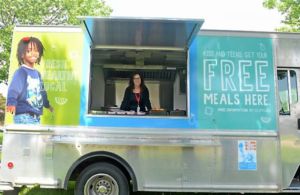Why are public schools feeding students, who are not in school, during the summer?
The Strib reported that some public schools have expanded efforts to feed students, students who are not in school, during the summer. And the kids are not just coming to them at parks and other places, they are using schools buses to reach them. I wrote about this last summer, so it caught my eye again.

“For students in poverty, the only healthy meal they get is in school,” said Daron Korte, assistant commissioner for the state Education Department, which partnered with the nonprofit Hunger Impact Partners on the app. “There are kids going hungry in the summertime. There’s still a large need.”
According to a report released last week by the Food Research & Action Center, Minnesota ranked 16th in the U.S. for its participation in the summer program, up three spots from the year before. The number of summer meals dished out in Minnesota has been on the rise, too, with 3.1 million meals served in 2017 compared with 2.2 million in 2012.
I have some observations and questions:
First, didn’t Gov. Dayton try to blow up the legislative session with a demand for $138 million in “emergency” funds for all schools; and didn’t 69 of our 350 plus school districts report a deficit? Two of the districts reporting large deficits were the St. Paul and Minneapolis schools, despite significant increases in funding. They are active in the feeding program.
Second, I cannot fathom how feeding students who are not in school can be justified as an expense of the district. It is a nice thing to do if you are a charity. But the schools are not charities. They are taxpayer funded institutions on a budget–a budget that 69 of them did not meet. And even if they did, feeding people is NOT PART of the educational mission, unless the kids are in school.
“We try to remove as many barriers as possible,” said Barb Mechura, director school nutrition operations for Hopkins Schools. “It’s just a really good reinvestment of what we’re doing the other nine months of the year.”
Third, where the heck are their parents? This gives a whole new meaning to in loco parentis.
The article makes it sound like these children are going to starve, which in almost all cases, I do not believe. And if they are starving, call social services and the local church because that is a bigger problem than the school should be handling.
I am not at all unsympathetic to hungry kids if they have incompetent and/or neglectful parents. But this is not a proper expenditure or activity for any public school. Period.
Folks, these schools have operational deficits and massive unfunded pension liabilities. Even if you could accept the argument that schools should feed kids year-round, and I do not, we do not have the money.
The good news is local charities are involved; it should stop there.
You can read the entire article here.